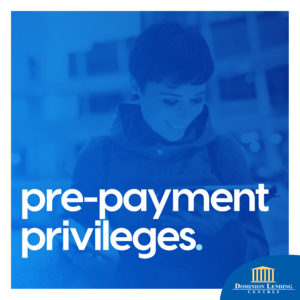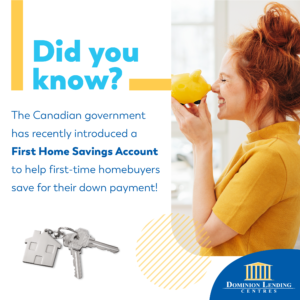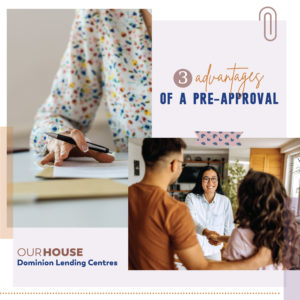
Each payment you make chips away at your mortgage, gradually shortening the amortization on your mortgage. Want to speed things up? You’ve got options, and I’m here to assist. Whether your closed mortgage is fixed or variable, you probably have pre-payment privileges, giving you the flexibility to boost payments or make extra contributions to your principal. Good news for paying off that mortgage faster!
Here are four ways to pay off your mortgage faster and save money.
I’ll use a simple illustration with a $300,000 closed mortgage, with monthly payment, an amortization period of 25 years and an annual fixed interest rate of 5.19% over a five-year term. With this starting point, you’ll see over the five-year term:
- Monthly payments = $1,777.40
- Interest paid for first 5-year term = $72,952.93
- Outstanding principal after 5 years = $266,308.67
Strategy #1: Increase the frequency of payments
Most lenders allow several options for payment frequency — weekly, accelerated weekly, bi-weekly, accelerated bi-weekly, semi-monthly, or monthly. When you pay more frequently and increase the amount, you chip away at the loan faster, pay less interest, and pay off your mortgage sooner.
Your mortgage payment frequency options include:
- Monthly – one payment per month for a total of 12 for the year.
- Semi-monthly – two payments per month for a total of 24 for the year.
- Bi-weekly – every two weeks (monthly payment x 12 divided by 26).
- Accelerated Bi-weekly – every two weeks (monthly payment divided by 2 and then paid over 26 payments).
- Weekly – every week (monthly payment x 12 divided by 52).
- Accelerated Weekly – every week (monthly payment divided by 4 and then paid over 52 payments).
| Payment type | Payment | Interest paid for
first 5-year term |
Total interest | Savings |
| Monthly | $1,777.40 | $72,952.93 | $233,221.32 | $0.00 |
| Semi-monthly | $887.75 | $72,839.09 | $232,652.13 | $569.19 |
| Bi-weekly | $819.40 | $72,830.34 | $232,608.38 | $612.94 |
| Accelerated bi-weekly | $888.70 | $71,581.17 | $194,399.71 | $38,821.61 |
| Weekly | $409.50 | $72,777.86 | $232,345.98 | $875.34 |
| Accelerated weekly | $444.35 | $71,516.32 | $193,956.95 | $39,264.37 |
As you can see in the example illustrated above, ‘accelerated’ bi-weekly or weekly payments options can help you save interest over the life of your mortgage and essentially knock years off your mortgage! The reason is that with the “accelerated” options, you make the equivalent of one extra monthly payment per year.
Strategy #2: Take advantage of increased payment options
For those who want to pay down their mortgage faster, one way to do so is to increase your regular payment amount. Here’s how a 10% increase in your monthly payment amount compares with my original illustration:
| Original illustration | Increasing monthly payment amount by 10% |
|
| Payment | $1,777.40 | $1,955.14 |
| Interest paid for
first 5-year term |
$72,952.93 | $71,488.28 |
| Total Interest | $233,221.32 | $189,388.32 |
| Savings | $0.00 | $43,833.00 |
| Outstanding principal after 5 yrs | $266,308.67 | $254,179.61 |
| Number of years to pay off mortgage | 25 years | 20 years 11 months |
Strategy #3: Take advantage of lump-sum payments
If you have some extra cash or flexibility in your budget, using your lump-sum pre-payment options can also save you money. With most closed mortgage loans, you’re usually allowed to make lump-sum payments towards your mortgage principal each year. This payment is typically a percentage of your original mortgage amount or your current outstanding balance. Let me illustrate how making a 2% lump-sum payment at the beginning of each calendar year can be advantageous for you.
| Original illustration | Making a 2% lump-sum payment each year of the term |
|
| Payment | $1,777.40 | $1,777.40 |
| Annual lump-sum payment | $0.00 | $6,000.00 |
| Interest paid for
first 5-year term |
$72,952.93 | $69,628.28 |
| Total Interest | $233,221.32 | $145,878.75 |
| Savings | $0.00 | $87,342.57 |
| Outstanding principal after 5 yrs | $266,308.67 | $232,984.02 |
| Number of years to pay off mortgage | 25 years | 16 years 5 months |
Before making a lump sum payment, it’s important to check with your lender to understand your prepayment limits and any penalties or restrictions that may apply if you go over the limit.
Strategy #4: Choose a shorter amortization period
Most mortgages are typically amortized over a 25-year period, which is the length of time it will take you to pay off your entire mortgage. However, you have the option to choose a shorter period when you start your mortgage or at the time of your mortgage renewal without facing any penalties. Although this means slightly higher monthly payments, it significantly cuts down the interest you pay over the shortened life of your mortgage. Here’s how much money you could save simply by opting for a reduced amortization period:
| 25-year amortization | 20-year amortization | 15-year amortization | |
| Payment per month | $1,777.40 | $2,002.27 | $2,393.49 |
| Total interest | $233,221.32 | $180,544.32 | $130,828.83 |
| Your savings | $0.00 | $52,677 | $102,392.49 |
In Conclusion
Remember, pre-payment privileges can differ from lender to lender. Be sure to understand and get the proper advice about the prepayment privileges provided by your lender for your mortgage. If you have any questions about your particular mortgage, don’t hesitate to reach out to me at 416-561-2454.






